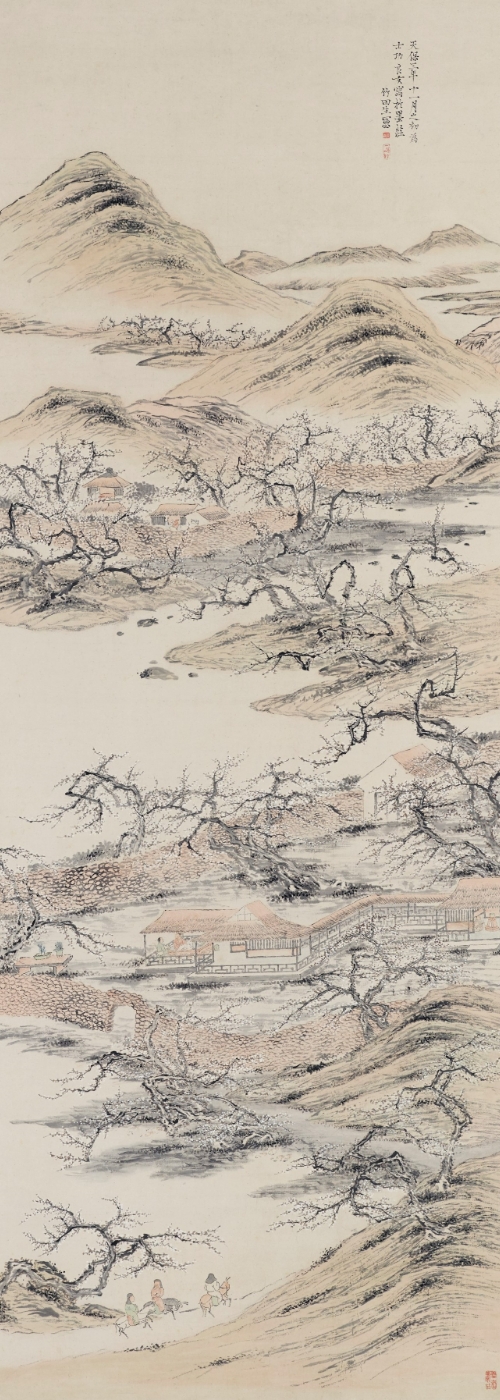- TOP
- Exhibitions
- Ⅳ
-
- September7Sat
- October20Sun, 2024
One Thing Leads to Another―From the “Illustrated Stories on Courtier Ban Dainagon” to Itō Jakuchū
This year marks around the 120th year since Idemitsu Sazo (1885-1981) first obtained Zen master Sengai’s work. Since the museum’s opening until today, the collection underwent processes of re-evaluation and growth, housing a wealth of works that cover histories of Japanese and Chinese calligraphy and painting. This exhibition showcases masterpieces of yamato-e (Japanese style painting), butsu-ga (Buddhist painting), suiboku-ga (ink painting), bunjin-ga (literati paintings), ukiyo-e, rimpa, and calligraphy while retracing the museum’s research and collecting practices.
Exhibition Works
Yamato-e (Japanese style painting)
-

(Vol.1, close-up)Illustrated Stories on the Courtier Ban Dainagon
Japan 12th Century
-

Flowering Plants of the Four Seasons
Japan 16th Century
【On view from September 7 (Sat) to September 29 (Sun)】
Rimpa
-

(Vol.4, close-up)Illustrated Stories of Saigyō
Japan 1630
-

Wind and Thunder Gods
Japan 19th Century
Bunjin-ga (literati paintings)
-

Twin Peaks Piercing the Clouds
Japan 19th Century
-

A Study in the Grove of Blossoming Plum Trees
Japan Dated 1832
Calligraphy
-

Kohitsu Tekagami (Album of Exemplary Calligraphy) "Minuyo-no-Tomo"
Japan 8th-14th Century
-

Poem Anthology "Nakatsukasa-shū (Collected Works of Poet Nakatsukasa)"
Japan 12th Century
Introduction of Chapters
-
Chapter 1: Splendor of Edo Painting
Masterpieces by the artist Sakai Hoitsu (1761-1828), who led the Edo Rimpa school, and Ito Jakuchu (1716-1800), who represents the 18th century Kyoto school, have entered the Idemitsu collection since the museum opened in 1966. Initially, the collection began with a single painting by the Zen monk Sengai (1750-1837) from the Edo period that the museum founder Idemitsu Sazo (1885-1981) had acquired when he was young. Since then, the collection continued to house diverse works and the museum’s exhibition activities have expanded. This chapter presents an outlook of the museum’s future exhibitions by showcasing the two sets of “Flowers and Birds of Twelve Months” along with works of the Edo Rimpa school and Jakuchu.
-
Chapter 2: Nature of Light
Poetic feelings Feeling expressed through the transitions of the four seasons and admiration projected onto the landscape of distant lands. Paintings with themes of natural landscapes have been created throughout the history of Japanese art. This chapter features prized works of yamato-e (Japanese painting) and bunjin-ga (literati painting) from the Idemitsu collection. In the yamato-e folding screen from the Muromachi period, graceful scenes of nature were depicted within beautifully decorated grounds of gold and silver. Artists of bunjin-ga (literati painting) from the Edo period sought their admired lands in actual landscapes, and attempted to express their ideal world through ink painting with liberating expressions.
-
Chapter 3: Beauty of Harmony
Expressions of calligraphy and painting in Japanese art have always been deeply intertwined with one another. Writings on paper not only express meaning as letters but have been also appreciated as beautiful forms in themselves. This chapter invites all to view a group of highly valued calligraphy from the museum collection. Additionally, the chapter showcases illustrated handscrolls that have displayed an enriching world of narratives by combining calligraphy and painting, and further, painted works that illustrate the teachings of Buddhism with sutra scripts. These masterworks will focus on the harmonious beauty of calligraphy and painting.
-
Chapter 4: Lures of the Colorful City
Genre painting is one of the fields of fine art that characterizes the museum’s painting collection. The works are filled with lively depictions of people who celebrate their lives in the city. This chapter introduces paintings that depict people and their activities in the centers of Edo and Kyoto. One such work is the “Famous Views of Edo” filled with detailed views of figures bustling about in both work and play. Additionally, the work places a spotlight on temples and natural scenery that can still be sought today. We hope visitors from Tokyo and abroad enjoy such visual details in the artworks.





